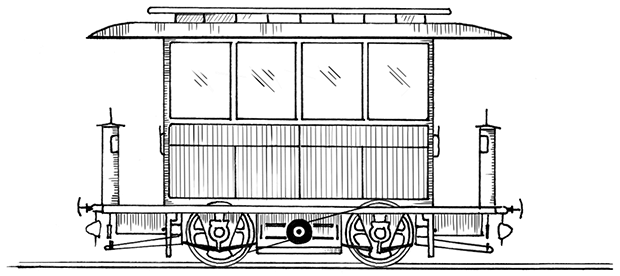PirotskyFedir
March 1, 1845, Lokhvytsia, Russian Empire (now Poltava Oblast, Ukraine) —
March 12, 1898, Oleshky, Russian Empire (now Kherson Oblast, Ukraine)
Electric tram
The Industrial Revolution, which began in England in the 1780s, led to the rapid growth of cities. In Kyiv alone, the population has increased sixfold in more than a hundred years: in 1894,

However, horse-drawn trams could not overcome the Kyiv hills. On a level road a carriage with twenty-four passengers was pulled by a pair of horses, but to ride up the hill one or two more pairs of horses were harnessed to the carriage. But six horses could not cope with the ascent to Oleksandrivsky Descent (now Saint Volodymyr Descent, which stretches from the Postal Square to the European Square).
In addition, if modern cars exhaust emissions, horses left behind piles of manure. At that time, the city was served by about eleven thousand horses, each of which produced
Fortunately, in the 1870s, Fedir Pirotsky became interested in the question the engineers all around the world asked: is it possible to transmit electricity at a distance?At that time, we had already established the transmission of weak current, the telegraph worked based on this principle, but we have not yet learned how to force the mechanism to move or illuminate the streets.
Pirotsky served in St. Petersburg in the Main Artillery Department and began a series of experiments on an abandoned railway branch line. 32, 50, 215 meters. Finally, in the summer of 1876 , he started an engine, which was one kilometer away from the power supply. The current was running directly through the rails, through one in the direction of the engine, and through the other in the opposite direction. A large part of the equipment for this experiment was purchased by the engineer at his own expense.
In 1877, Pirotsky received permission to conduct further experiments and was allocated a section of rail on the territory of the tram fleet. He published the results in the Engineering Journal and sent copies himself to engineers who might be interested. So one copy fell into the hands of Werner von Siemens, a German inventor, and founder of Siemens.
It took him another three years to improve the design. Finally, on August 22, 1880, at the corner of Bolotnaya Street and Degtyarny Lane, Pirotsky set the tram car in motion by the electric force. At the dedicated section, the tram accelerates to
The first tram did not have a current collector, like the modern one, the current was transmitted exclusively through rails. And the Kyiv tram, launched by Struve, already had a current collector. Representatives of the post and telegraph office even feared that “the movement of current through the contact wire and rails will interfere with the work of the telegraph and telephone”.
Throughout September, residents of St. Petersburg actively used the tram, viewing it, of course, more as an attraction than a new type of public transport, because the experimental area was only 85 meters.
It seems that the time has come for the city authorities to modernize the public transport system, but the owners of the horsecars hindered the process, and the launch of the electric tram in St. Petersburg was postponed until 1895.
It was then that the first passenger electric tram line appeared in Berlin. Built by Siemens according to Pirotsky’s drawings, the tram went on the route on May 16, 1881.
Kyiv is lucky to have steep hills. Difficulties in overcoming the Oleksandrivsky Descent inspired Kyiv engineer Amand Struve to solve the problem. He quickly realized that he needed to replace the horse-drawn tram with an electric one. A power plant was built near the monument to the Magdeburg Rights, and on June 1, 1892, the first electric tram of Pirotsky’s design was launched.

Pirotsky’s electric tram
In 1895, the Kyiv City Duma finally renounced the use of horsecars.